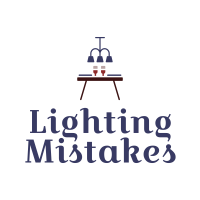Yes, you can replace your incandescent light with a LED as long as it fits in the fixture.
People are intended to switch their traditional lights with LED lights. And there are valid reasons behind that.

But, before planning on replacing it, you need to know what factors will decide whether your LED bulb can fit in an Incandescent Fixture.
We will reveal it all, but before that, let’s find out why you should replace your traditional lights with LED lights.
Why Switching to an LED Light is Smart Choice
Although both types of lights have their own benefits. But, LED is considered a smarter choice for a few reasons.
First of all, LED lights are energy-efficient. Incandescent Lights heats up a wire filament to a certain temperature to produce light. Heat is a byproduct of Incandescent lights that wastes energy. On the contrary, LED lights operate more like a battery.
Although LED lights are a little more expensive than an incandescent light, it’s cost-efficient in the long run.
LED lights beat traditional lights by means of durability as well. The wire filaments of the incandescent lights are fragile. Thus it tends to tear up much frequently. LED bulbs on the contrary, are much resistant to vibrations and impact.
LED lights usually have a higher lifespan. It’s operational lifespan is of 25,000 hours at the minimum. That is almost 25 times more than incandescent lights.
LED lights don’t contain mercury like the incandescent and CFL bulbs. It makes it a non-toxic, eco-friendly option. That’s why switching to an LED light is not just smart, but a necessity for every responsible citizen.
When Can You Use an LED Bulb in an Incandescent Fixture?
Well, now that you have all these reasons. Before you replace your incandescent light with an LED light, you need to check and ensure a few things.
1. Check If the LED Bulb Base Matches the Fixture Size
You can put an LED bulb in any fixture that matches the bulb base. The most common two bulb bases are the screw type (E27) and the pin type (GU10). These two bulb fixtures are commonly found in household lighting systems.
And both type bulb bases are also commonly found for LED bulbs and incandescent bulbs. So, before switching to an LED bulb, crosscheck your lighting system and the type of your fixture and buy the bulb accordingly.
Sometimes the fixtures come in various decorative outside shapes. For example, a household bulb fixture and a fixture of the bulb of a lava lamp won’t be the same in shape, even if the type of fixture matches, the light size and shape will vary for these two.
So, consider if there are any limitations of your decorative fixture while switching to an LED bulb from an incandescent bulb.
2. Check Whether the Bulb Voltage Matches with the Fixture Voltage
The bulb voltage should match with the fixture voltage. Sometimes, the bulb works even if its voltage doesn’t match with the voltage capacity of the lighting system.
But, that’s hazardous, since either you won’t get the best output of the bulb, or the bulb will get wasted way before its expected lifespan.
Usually household lighting systems provide 120V outlets. These are known as line voltage. The Line voltage is safe since you usually don’t need any transformer to use different voltage bulbs. It will work fine as long as the bulb operates at a lower voltage than the fixture’s voltage (which is the norm).
But, in a low voltage lighting system, you will need a transformer to reduce the voltage to deliver in a lower voltage bulb (12V or 24V) from a higher voltage fixture (120V).
So, you should check what voltage capacity the fixture delivers and buy an LED light accordingly.
3. Do Not Mix Different Types of Bulbs in the same Fixture
Some multi-socket enclosed fixtures allow multiple bulbs in one fixture.
If you have one of these, you might be wondering whether you should or shouldn’t mix Incandescent, LED and CFL bulbs in the same fixture.
The answer is a BIG NO.
CFL and Incandescent bulbs operate differently than LED bulbs. Since these traditional bulbs pull more current than an LED with the same lumen power, your traditional bulbs will harm the LED bulbs.
The LED bulbs will not be getting enough energy to light up. Slowly, it will reduce the lifespan of the LED bulbs in that fixture and damage them.
Also, these bulbs generate heat which can melt and damage the plastic covers of the LED bulbs.
Moreover, the ambient temperature created by these bulbs inside the fixture will also cause harm to the LED bulbs.
So, if you are deciding to opt for LED bulbs, change all of the bulbs in that fixture at a time. Otherwise do not change at all. That is the best recommendation we can offer you in that case.
Wrapping Up
Incandescent Lights offer a good vibe. A lot of people will still prefer using an incandescent light. Especially for decorative purposes.
But, keeping an alternative is always smart. You can get variations of mode while cutting down a few dollars from your electricity bills by switching to an LED light.
All you need to ensure before the replacement is that the base and socket of your LED light fits in that particular fixture.
